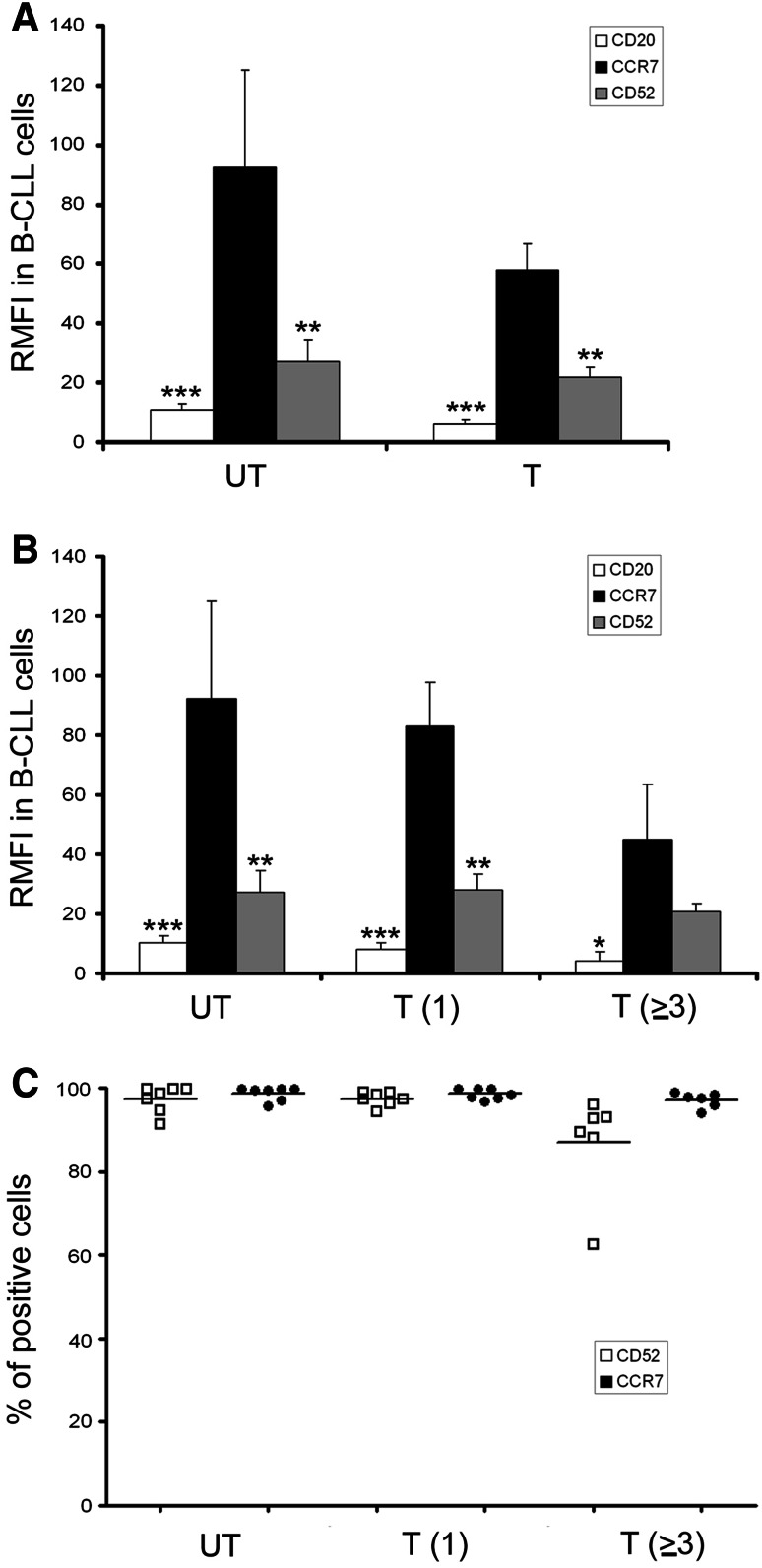Fig. 4.
CCR7 surface levels are high in heavily treated CLL patients. a Relative median fluorescence intensity in CLL cells from untreated or treated patients. PBMC samples from 23 CLL patients were co-stained with anti-CD19-FITC and anti-CD5-APC monoclonal antibodies, and either with a PE-conjugated isotype control mAb, a PE-conjugated antihuman CCR7 mAb, a PE-conjugated antihuman CD52 mAb, or a PE-conjugated antihuman CD20 mAb. Cells were analyzed by FCM, and CCR7, CD52 and CD20 surface density was measured. Relative median fluorescence intensity (RMFI) of each marker respect to the isotype control is represented. Bars represent mean ± mean standard error. UT, untreated patients (n = 7), T, treated patients (n = 16). Statistical analysis was done by comparing CCR7 with CD52 and CD20. *p < 0.05; **p < 0.01; ***p < 0.0001. b CCR7 levels are high in heavily treated patients. The same CLL patients as presented in a were classified according to the number of treatments received. CCR7, CD52 and CD20 surface density was analyzed, and relative median fluorescence intensity (RMFI) is shown. Bars represent mean ± mean standard error. UT, untreated patients (n = 7); T(1), patients treated once (n = 7); T(≥3), patients treated three or more times (n = 6). *p < 0.05; **p < 0.01; ***p < 0.0001. c The number of CCR7-positive CLL cells remains high in heavily treated patients. The same CLL patients analyzed in a were classified according to the number of treatments received, and the percentage and mean of CCR7-positive and CD52-positive cells were determined. UT, untreated patients (n = 7); T(1), patients treated once (n = 7); T(≥3), patients treated three or more times (n = 6)

